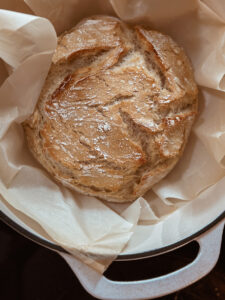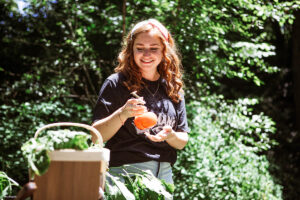I grew up in the city, so coming to live and work on the World Hunger Relief farm in Waco, Texas is one great big learning experience for me. Since my arrival a few months ago, I have learned so much, from where eggs are ke pt in the pantry, to where we keep the sawdust for our composting toilets, to how a community of 25 organizes itself for a day’s farm work, to how to milk a goat. Though the composting toilet certainly merits elaboration, the last is perhaps the most colorful story for a girl who grew up far removed from her food.
pt in the pantry, to where we keep the sawdust for our composting toilets, to how a community of 25 organizes itself for a day’s farm work, to how to milk a goat. Though the composting toilet certainly merits elaboration, the last is perhaps the most colorful story for a girl who grew up far removed from her food.
The WHR farm is a Grade-A raw goat milk producer. The pasteurization and homogenization process that milk from a supermarket goes through means that it loses a lot of valuable enzymes and proteins as well as a lot of its flavor. Raw milk, on the other hand, is incredibly fresh–I was astounded that it took only about an hour from milking to lining up the bottles in the fridge, ready for sale.
But I wasn’t thinking about these things as I stepped into the goat dairy with my clothes covered with dirt from a day’s work in the garden. I was thinking about how the only animals that I have spent much time around are pets; for that reason I know how to talk to animals and pet them, but not to expect them to be useful. As I sterilized the buckets and strainers, my milking buddy Amber put our eight milkers into their stanchions. As we snapped our gloves on, she showed me the proper technique by grabbing my fingers in a vice grip: “You squeeze hard at the top and then you squeeze with the rest of your fingers. But don’t pull down on the udder—if anything, push up. That’s how the kids do it.â€

I rehearsed those directions in my head as I sat down next to Triple and handed her a dish of goat feed, which she tucked into with gusto. I stuck the bucket underneath her, leaned into her side, and grabbed her teats. I slowly and deliberately squeezed the way Amber told me, and voila, a stream of milk pinged into the bucket. The glory of creation. I tried the other side. Again, the miracle. I awkwardly found a faster rhythm, stuttering occasionally. Triple patiently waited, finished with her dinner, as I milked her dry, her udder left small and wrinkly. I thanked her for the use of her .4 gallons of milk as I moved on to my next goat, working on my rhythm and muscle memory and giving thanks for the tactile knowledge of my food.

































I love milking and miss that the most around here. This fall I was lucky enough to help milk some goats at a demonstration and was thrilled. Enjoy the milking – it is so very very rewarding.